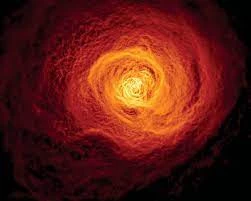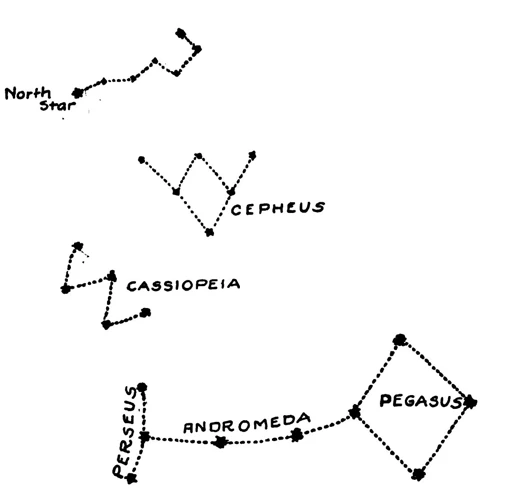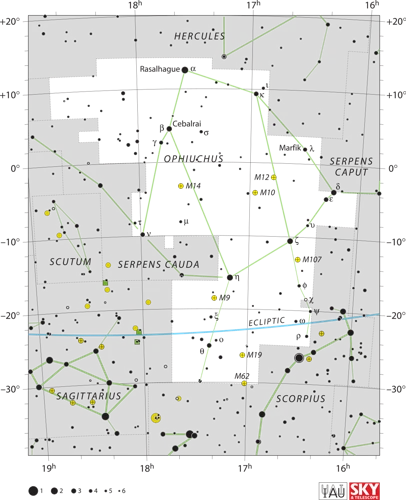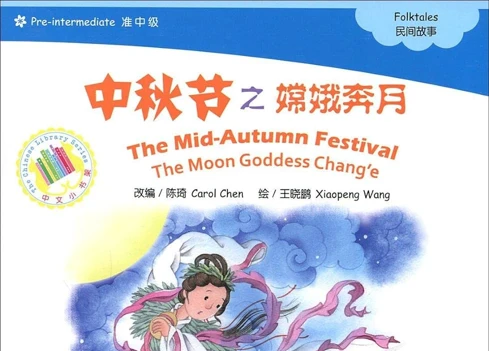Intriguing Legends and Festivities: Chinese Moon Goddesses, Chang’e, and the Mid-Autumn Festival
Immerse yourself in the enchanting world of Chinese mythology and vibrant cultural celebrations as we delve into the captivating story of Chang’e, a legendary Chinese moon goddess, and the Mid-Autumn Festival. This article will take you on a journey through ancient tales and historical traditions surrounding these cherished figures. Discover the origins and mythology of Chang’e, her remarkable ascent to the moon, and the significance of the Mid-Autumn Festival. Prepare to learn about the fascinating customs, delectable delicacies, and the modern-day significance of this remarkable celebration that captures the hearts of people around the world. Journey with us into a realm where legends and festivities intertwine!
Contents
- The Legend of Chang’e
- The Mid-Autumn Festival
- Modern Significance
- Conclusion
-
Frequently Asked Questions
- 1. What is the significance of Chang’e in Chinese culture?
- 2. How did Chang’e become immortal?
- 3. What is the Mid-Autumn Festival?
- 4. Why is the Mid-Autumn Festival associated with the moon?
- 5. What are some customs and traditions of the Mid-Autumn Festival?
- 6. What are mooncakes and why are they associated with the festival?
- 7. How is the Mid-Autumn Festival celebrated outside of China?
- 8. What is the spiritual significance of the Mid-Autumn Festival?
- 9. How does the Mid-Autumn Festival promote unity?
- 10. How has the celebration of the Mid-Autumn Festival evolved over time?
- References
-
Frequently Asked Questions
- 1. Who is Chang’e, the Chinese Moon Goddess?
- 2. What is the origin of the legend of Chang’e?
- 3. How did Chang’e end up on the moon?
- 4. What is the significance of the Mid-Autumn Festival in Chinese culture?
- 5. What is the historical background of the Mid-Autumn Festival?
- 6. What are some customs and traditions associated with the Mid-Autumn Festival?
- 7. What are mooncakes and why are they important during the festival?
- 8. How is the Mid-Autumn Festival celebrated around the world?
- 9. What is the symbolism behind the Mid-Autumn Festival?
- 10. How does the legend of Chang’e and the Mid-Autumn Festival promote cultural heritage?
- References
- Read More
The Legend of Chang’e

Chang’e, the alluring Chinese moon goddess, is steeped in intriguing mythology and has captured the imaginations of people for centuries. According to legends, Chang’e was a beautiful woman who attained immortality after consuming an elixir of life. However, the elixir was meant to be shared with her husband, Houyi. In an act of self-sacrifice, Chang’e swallowed the elixir alone and floated up to the moon, never to return to Earth. Some versions of the myth suggest that Chang’e’s choice was driven by her desire to avoid an evil villain who sought to steal the elixir for himself, while others emphasize her longing to be reunited with her beloved. This mesmerizing tale of love, sacrifice, and celestial destiny has become an integral part of Chinese folklore and continues to inspire people across generations.
1.1 Origins and Mythology
|
The Origins of Chang’e: The origins of Chang’e and her place in Chinese mythology are intertwined with ancient legends and beliefs. It is believed that the story of Chang’e dates back thousands of years, originating from the Shang Dynasty (1600-1046 BCE) or even earlier. The moon has always held a mystical significance in Chinese culture, symbolizing beauty, femininity, and immortality. Chang’e herself is often associated with these qualities, embodying grace and celestial allure. The Mythology of Chang’e: Another version of the myth suggests that Chang’e’s journey to the moon was a consequence of her accidental consumption of the elixir. In this variant, Chang’e turned to the moon as a place of solitude, longing, and eternal reflection. Whatever the version, the tale of Chang’e’s celestial existence has captivated generations, serving as a symbol of love, sacrifice, and the eternal nature of the moon itself. |
1.2 Chang’e’s Journey to the Moon
In the captivating tale of Chang’e’s Journey to the Moon, we witness the extraordinary transformation of the legendary Chinese moon goddess. After ascending to the heavens, Chang’e found herself in the eternal realm of the moon. Legends describe a serene lunar palace where she resides, accompanied only by the Jade Rabbit, a loyal companion who tirelessly pounds the elixir of immortality. This lunar paradise is said to be a place of tranquility and beauty, with Chang’e shining as the radiant queen of the moon. In some versions of the story, it is believed that Chang’e’s yearning for her husband and her love for humanity compelled her to take on the mantle of the Moon Goddess, nurturing and protecting Earth from her celestial abode. Chang’e’s cosmic presence serves as a reminder of love’s eternal power and the enduring bond between the mortal and divine realms. Her ethereal journey continues to inspire and enchant those who gaze up at the moon, searching for a connection to the mystical world beyond our own.
The Mid-Autumn Festival

The Mid-Autumn Festival is a joyous celebration that holds a special place in the hearts of the Chinese people. This ancient festival is held on the 15th day of the eighth lunar month when the moon appears at its brightest and roundest. With roots dating back over 3,000 years, the Mid-Autumn Festival is a time for families to come together, express gratitude for the harvest, and celebrate unity. One of the most cherished customs during this festival is the tradition of gazing at the moon. Families gather outdoors, marveling at the moon’s radiance while enjoying delicious mooncakes and other delectable treats. The festival also showcases mesmerizing lantern displays, vibrant parades, and captivating cultural performances, creating an enchanting atmosphere that transports everyone into a realm of joy and togetherness.
2.1 Historical Background
In understanding the significance of the Mid-Autumn Festival, it is essential to delve into its historical background. Dating back over 3,000 years, this cherished festival has deep roots in Chinese culture and tradition. The origins of the Mid-Autumn Festival can be traced back to the ancient worship of the moon during the Shang Dynasty. Initially, it was celebrated as a harvest ritual to give thanks for a bountiful yield. Over time, the festival evolved to incorporate elements of folklore and legendary figures, such as Chang’e, the moon goddess. During the Tang Dynasty, the festival gained prominence and became an official holiday. Emperors would hold elaborate ceremonies to pay homage to the moon and gather with officials to enjoy the festivities. The Mid-Autumn Festival has endured throughout history, surviving wars, dynastic changes, and cultural transformations. Today, it remains a beloved tradition, celebrated not only in China but also by Chinese communities around the world. Its rich historical background adds depth and meaning to the joyous festivities that take place during this auspicious occasion.
2.2 Customs and Traditions
Customs and traditions play a significant role in the celebration of the Mid-Autumn Festival. Families come together to participate in various activities that have been passed down through generations. One prominent custom is the lighting of lanterns, which symbolizes the hope for a bright future. These lanterns come in various shapes, sizes, and colors, adding a vibrant touch to the festive atmosphere. Another popular tradition is moon gazing, where families gather in open spaces or on rooftops to admire the full moon. This act is believed to bring luck, love, and unity among family members. Folklore often connects the moon with romance and reunions, further enhancing the significance of this tradition. In addition to lanterns and moon gazing, the Mid-Autumn Festival is also a time for storytelling, especially the retelling of legends related to Chang’e and the moon. Elders pass down these tales, ensuring that the rich mythology is preserved and cherished. It is customary to exchange gifts and share mooncakes, a traditional delicacy associated with the festival. Families give beautifully packaged mooncakes to their loved ones as a symbol of unity and togetherness. These round pastries, with a rich filling often made from lotus seed paste or red bean paste, are intricately designed and have become a culinary highlight of the festival. The customs and traditions surrounding the Mid-Autumn Festival provide an opportunity for families and communities to come together, express gratitude, and celebrate the beauty of unity and tradition.
2.3 Mooncakes and Other Delicacies
Mooncakes hold a special place in the Mid-Autumn Festival celebrations, symbolizing unity and sharing among families and friends. These delectable pastries come in various flavors, shapes, and sizes, with intricate designs imprinted on their golden crusts. Traditional mooncakes often have a rich filling made from lotus seed paste or red bean paste, representing the full moon. However, there is a wide range of modern flavors available, including green tea, black sesame, and even durian. Many mooncakes also contain salted egg yolks at their center, symbolizing the fullness of the moon.
Beyond mooncakes, the Mid-Autumn Festival boasts a variety of other delightful delicacies. One such treat is the pomelo, a citrus fruit with a mild and refreshing flavor. It is often enjoyed during this festive season as it represents luck and prosperity. Another popular delicacy is taro, a starchy root vegetable that is utilized in both sweet and savory dishes. Sweet taro paste-filled pastries are a favorite among festival-goers.
Additionally, osmanthus flowers are a delightful element of the Mid-Autumn Festival cuisine. These small, fragrant flowers add a subtle, floral aroma to many dishes and drinks, particularly osmanthus jelly or tea. The osmanthus flower is renowned for its calming properties and is believed to bestow blessings and happiness.
The Mid-Autumn Festival serves as an occasion for families and friends to come together and enjoy these mouthwatering delicacies. It’s a time when mooncakes and other festive treats take center stage, creating an atmosphere of warmth, joy, and togetherness.
Modern Significance

The Mid-Autumn Festival and the mythical story of Chang’e hold immense significance in modern times, both within China and around the world. The festival is not only a time for families to come together and celebrate, but it has also become a symbol of cultural heritage and unity. Symbolism plays a crucial role in the modern interpretation of this festival, with the full moon representing reunion and completeness. In many parts of the world, including Chinese communities abroad, the Mid-Autumn Festival is celebrated with great fervor, showcasing the enduring cultural ties and the spirit of togetherness. Additionally, the festival has become an opportunity for people to extend their gratitude for the harvest and reflect on the bountiful blessings in their lives. Mooncakes, a traditional delicacy associated with the festival, have also gained popularity internationally, becoming a symbol of Chinese cuisine and cultural exchange. The Mid-Autumn Festival and the legendary story of Chang’e continue to resonate with people today, fostering a sense of connection with the past and promoting cross-cultural understanding.
3.1 Celebrations Around the World
The Mid-Autumn Festival, also known as the Moon Festival, is not only celebrated in China but also in various parts of the world, where Chinese communities reside. As Chinese people have migrated and settled around the globe, they have carried their traditions and festivities with them, spreading the joy of the Mid-Autumn Festival to new lands. Countries such as Malaysia, Singapore, Vietnam, and the Philippines have vibrant Chinese communities that hold elaborate celebrations during this auspicious time. These global celebrations often incorporate local customs and create a unique blend of traditions. In Malaysia, lantern processions and cultural performances take center stage during the festival. Singapore’s Chinatown transforms into a vibrant display of lights and decorations, attracting both locals and tourists. Vietnamese communities engage in ancestral worship, lantern parades, and lion dance performances. The Philippines embraces the Mid-Autumn Festival with lantern-making contests, dragon boat races, and mooncake eating competitions. These international celebrations not only serve as a way for Chinese communities to reconnect with their roots but also provide an opportunity for people of different cultures to come together and experience the joyous spirit of the Mid-Autumn Festival.
Conclusion

The Enigmatic Charm of Chinese Moon Goddesses and the Mid-Autumn Festival
Unraveling the mysteries of Chinese moon goddesses and the festive celebration of the Mid-Autumn Festival has been a remarkable journey. The legend of Chang’e, with its themes of love, sacrifice, and celestial transcendence, continues to captivate the hearts of people worldwide. From her origins and mythology to her enchanting journey to the moon, the story of Chang’e unveils the deep-rooted beliefs and values in Chinese culture. The Mid-Autumn Festival, with its historical background rooted in lunar worship and harvest celebrations, shines a light on the rich cultural customs and age-old traditions that have stood the test of time.
This festival serves as a unifying force, with families and friends coming together to appreciate the beauty of the full moon, exchange heartfelt greetings, and indulge in delectable mooncakes and other delicacies. The cultural significance of the Mid-Autumn Festival is not limited to China—it is celebrated by diverse communities around the world, promoting unity, harmony, and the spirit of togetherness.
As the moon brightens the night sky during the Mid-Autumn Festival, it serves as a timeless symbol of hope, dreams, and reunion. This celebration reminds us of the importance of cherishing our loved ones, cultivating unity, and embracing the traditions that connect us to our heritage. Let the captivating tales of Chang’e and the allure of the Mid-Autumn Festival continue to inspire us as we navigate the modern world while honoring our past.
So, next time you catch a glimpse of the moon during the Mid-Autumn Festival, let it be a reminder of the eternal charm of Chinese moon goddesses and the enduring spirit of cultural celebrations that bring people together across borders and generations. Let us revel in the enchantment of these traditions and appreciate the beauty of the moon’s gentle glow, for it carries with it the magic and legacy of Chang’e, the moon goddess whose story remains etched in our hearts.
Frequently Asked Questions

1. What is the significance of Chang’e in Chinese culture?
Chang’e holds immense cultural significance in Chinese mythology. As the goddess of the moon, she symbolizes beauty, femininity, and eternal love. Her story is celebrated during the Mid-Autumn Festival, and she is revered as a figure of inspiration and devotion.
2. How did Chang’e become immortal?
According to legend, Chang’e consumed an elixir of immortality meant for her husband, Houyi. This act of sacrifice transformed her into an immortal being and propelled her to reside on the moon for eternity.
3. What is the Mid-Autumn Festival?
The Mid-Autumn Festival, also known as the Moon Festival, is a traditional Chinese celebration that takes place on the 15th day of the 8th lunar month. It is a time for families to gather, appreciate the full moon, and express gratitude for the harvest.
4. Why is the Mid-Autumn Festival associated with the moon?
The Mid-Autumn Festival originated from the ancient Chinese belief in lunar deities and the moon’s connection to agricultural abundance. The full moon during this festival symbolizes unity, togetherness, and the reunion of families.
5. What are some customs and traditions of the Mid-Autumn Festival?
Some customs and traditions of the Mid-Autumn Festival include moon-gazing, lighting lanterns, performing dragon and lion dances, and sharing mooncakes with family and friends. These activities foster a sense of joy, harmony, and gratitude.
6. What are mooncakes and why are they associated with the festival?
Mooncakes are traditional Chinese pastries typically filled with lotus seed paste, red bean paste, or salted egg yolks. They are intricately designed and often given as gifts to symbolize unity, harmony, and good fortune during the Mid-Autumn Festival.
7. How is the Mid-Autumn Festival celebrated outside of China?
The Mid-Autumn Festival is celebrated by people of Chinese descent worldwide. It has become an occasion for communities to come together, showcase their cultural heritage, and share the joy of the festival through various activities, performances, and feasts.
8. What is the spiritual significance of the Mid-Autumn Festival?
The festival carries deep spiritual symbolism. It represents the gratitude for a bountiful harvest and the desire for blessings, reunion, and prosperity. It also serves as a reminder to cherish family bonds and express gratitude for the abundance in one’s life.
9. How does the Mid-Autumn Festival promote unity?
The Mid-Autumn Festival is a time for families to come together, strengthening their bonds and fostering a sense of unity. The act of sharing mooncakes, enjoying moonlit nights, and partaking in communal celebrations creates a shared experience that brings people closer.
10. How has the celebration of the Mid-Autumn Festival evolved over time?
While the core traditions of the Mid-Autumn Festival remain intact, modern celebrations have incorporated new elements, such as lantern displays, cultural performances, and creative variations of mooncakes. These adaptations ensure the festival continues to resonate with changing times while preserving its rich cultural heritage.
References
Frequently Asked Questions

1. Who is Chang’e, the Chinese Moon Goddess?
Chang’e is a prominent figure in Chinese mythology, known as the Moon Goddess. She is widely celebrated during the Mid-Autumn Festival and is believed to reside on the moon.
2. What is the origin of the legend of Chang’e?
The legend of Chang’e has its roots in ancient Chinese mythology. According to the tale, Chang’e and her husband Houyi were celestial beings who became mortal when their immortality elixir was stolen.
3. How did Chang’e end up on the moon?
Chang’e ended up on the moon after consuming the immortality elixir that was stolen from her. Instead of achieving immortality, she became weightless and floated to the moon, where she has resided ever since.
4. What is the significance of the Mid-Autumn Festival in Chinese culture?
The Mid-Autumn Festival is one of the most important traditional festivals in Chinese culture. It symbolizes unity and harmony, where families gather together to appreciate the beauty of the moon and celebrate the autumn harvest.
5. What is the historical background of the Mid-Autumn Festival?
The Mid-Autumn Festival has a long history that dates back over 3,000 years. It originally started as a ceremony to worship the moon and pray for a bountiful harvest. Over time, it evolved into a family-oriented festival.
6. What are some customs and traditions associated with the Mid-Autumn Festival?
During the Mid-Autumn Festival, families gather for a reunion dinner, light lanterns, and exchange mooncakes. It is also common to appreciate the moon’s beauty, play traditional games, and share stories about Chang’e and the moon.
7. What are mooncakes and why are they important during the festival?
Mooncakes are Chinese pastries usually filled with lotus seed paste or various other fillings. They are round in shape, symbolizing completeness and unity. They are given as gifts to friends and family during the Mid-Autumn Festival.
8. How is the Mid-Autumn Festival celebrated around the world?
The Mid-Autumn Festival is celebrated by Chinese communities worldwide. It is especially significant in countries like China, Taiwan, Vietnam, and the Philippines. Various cultural events, lantern parades, and performances take place during this festive period.
9. What is the symbolism behind the Mid-Autumn Festival?
The Mid-Autumn Festival is often seen as a symbol of family unity, as it brings loved ones together. It is also associated with the concept of rejuvenation, as it marks the changing season and the beginning of autumn.
10. How does the legend of Chang’e and the Mid-Autumn Festival promote cultural heritage?
The legend of Chang’e and the celebration of the Mid-Autumn Festival play a significant role in preserving Chinese cultural heritage. They showcase the traditions, values, and mythology that have been passed down through generations, fostering a sense of pride and identity.
References
- Moon goddesses through history, from Chang’e in Chinese …
- CHINA: Mid Autumn Festival mythology and folklore







